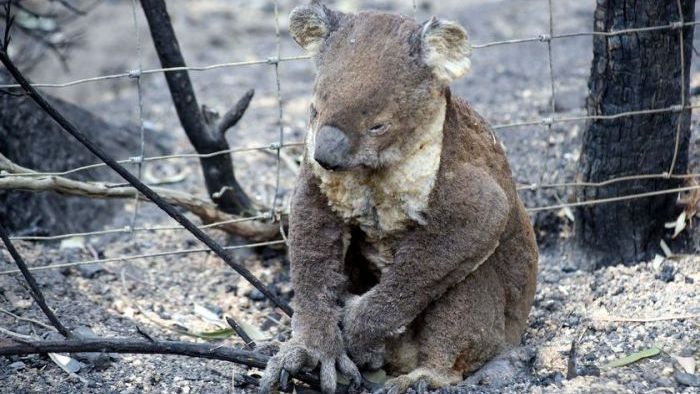
The 2020 Climate Report Paints A Grim Picture Of Australia's Future
Share
Catastrophic fire seasons, rising sea levels, prolonged droughts, scorching temperatures, and scattered rainfall is in Australia's immediate future according to the latest biennial climate report from the Bureau of Meteorology and the CSIRO.
The report, named The State of the Climate 2020, painted a dire picture of our climate challenge while our nation heals from the hottest year on record and a natural disaster fire season.
Since records began in 1910, Australia has warmed by nearly 1.5C. Since the early 1950s, the looming threat of days with extreme fire danger has intensified year-by-year. A trend that scientists believe will only worsen in the coming decades.

BOM manager of climate environmental prediction Dr Karl Braganza said, " There has been a significant increase in the frequency of dangerous fire weather days across Australia, particularly during spring and summer, leading to an earlier start to the southern fire season,”
And that, "Climate change is influencing these trends through its impact on temperature, rainfall and relative humidity and the resulting change to the fuel moisture content.”
CO2 Emissions

Despite massive drops in CO2 emissions during global pandemic lockdowns, no significant change in CO2 concentrations, the study found.
As the world's economic demand and industry have returned, so has the increasing greenhouse gases in our atmosphere that drive warming.
Every decade proves an increase in CO2 concentrations in our atmosphere.
As fossil fuel consumption increases, as does CO2. The report names our mass reliance on fossil fuels as the contributor of approximately 85% of all emissions between 2009 and 2018.
And pre-industrial levels of CO2 have been rising due to fossil fuel emissions - long before our reliance on smog - according to the Cape Grim air pollution station in Tasmania.
Our Oceans

The uptake of CO2 in our oceans is turning it acidic, causing a dramatic rise in the frequency and intensity of oceanic heatwaves. Our marine ecosystems cannot - and are not -coping.
Dr Jaci Brown, CSIRO Climate Science Centre director, said, "These trends, which are projected to continue in the coming decades, are already posing a significant threat to the long-term health and resilience of the coral reef ecosystems around Australia’s coast. It’s quite a sobering look ahead.”
Our beaches continue to shrink from rising sea levels. Since 1880, the global average sea level has risen by 25cm. Half of that growth has been since 1970, proving an alarmingly accelerated rate.
Growing Heat, Lower Rain

Intensely warmer days are not only becoming more frequent, but they're also more intense than ever.
Just last year we experienced 43 days classified as "extremely warm" - three times as many as any years before the new millennium. Of these extreme days, the national daily maximum - or our nation's average temperature - exceeded 39C.
After the nation burns each year, figuratively and literally, rainfall is at a scarce 16% during our cooler months for the past 50 years.
Especially in Australia's southwest, often thought of as our lush, greener regions.
While the forested parts of Australia see less moisture, the northern arid parts are experiencing more frequent downpours since the 1970s. These intense, unpredictable downpours wash away the Earth and damage the environment with flood conditions.
“While highly variable from year to year, there have been more ‘wetter than average’ years in recent decades,” Dr Braganza said.
Australia's Future Demands Action.
To curb the downward spiral of environmental devastation, we need a governing intervention to create and climate change plan. Including a concerted effort to educate Australian's on the dire natural emergency the befalls us.
The preservation of our natural home and its inhabitants requires an understanding that these climate risks influence the world around us. This includes our economy and essential ecosystems, something we take for granted daily.
“To build a sustainable, resilient and productive future for Australia, governments, industries and communities need robust climate information. This report presents a synthesis of our most up-to-date understanding of the changing nature of Australia’s climate, providing a sound base for economic, environmental and social decision-making now and into the future.” Dr Brown said.
Do you know enough about the consequences of our climate to educate someone else?
Share this with them and engage in a discussion to move the collective consciousness forward.
#Space_Aus




